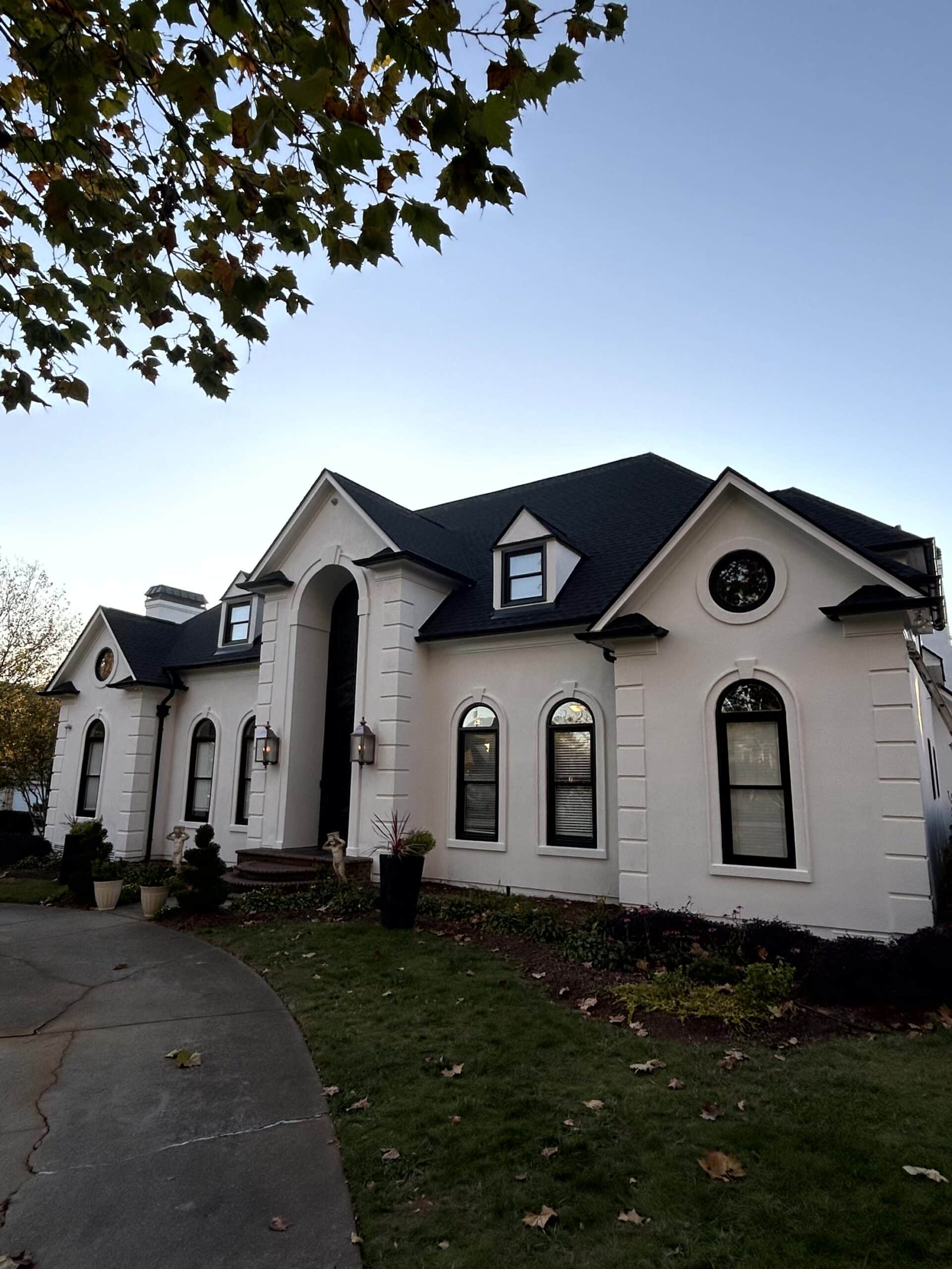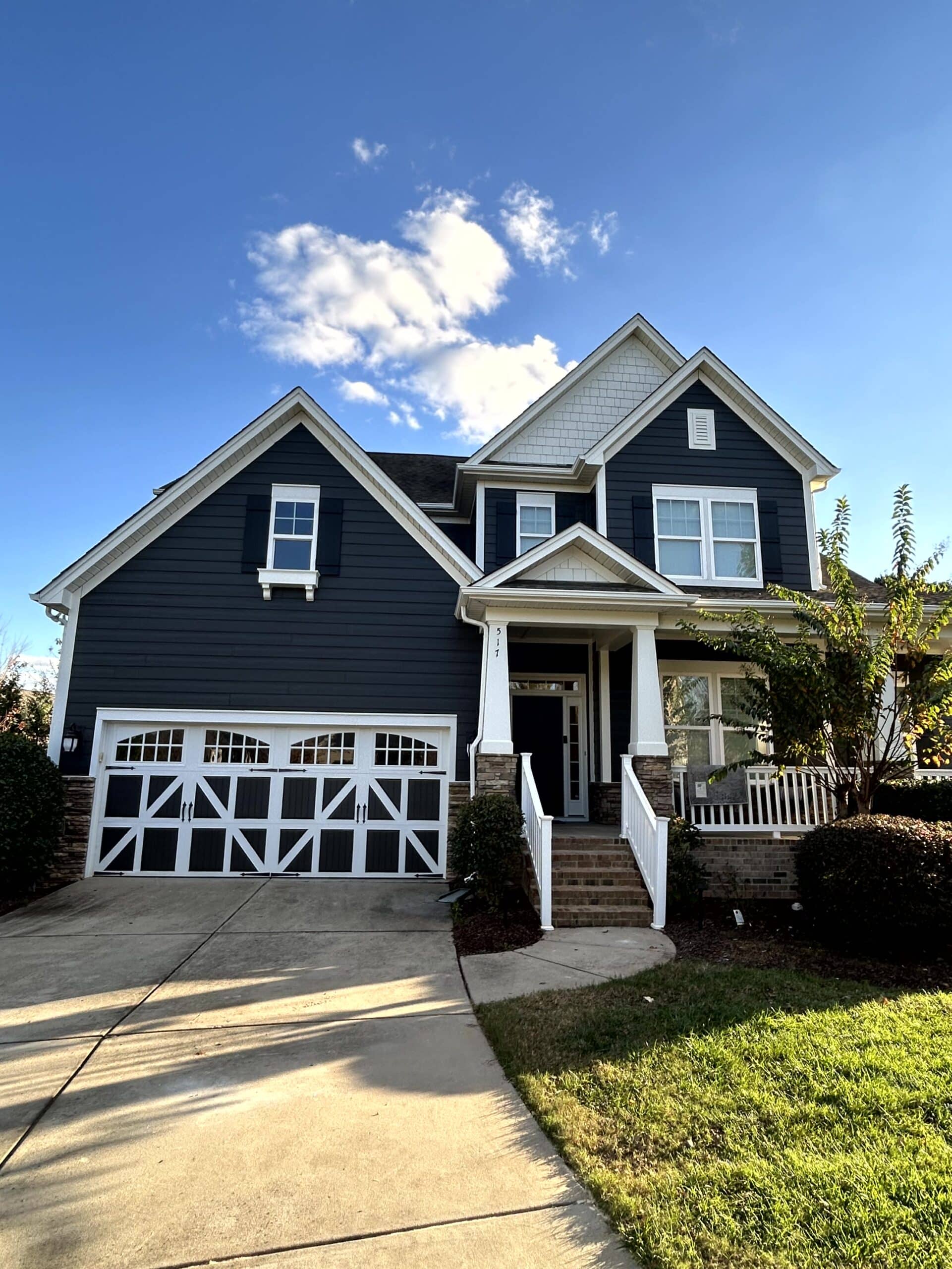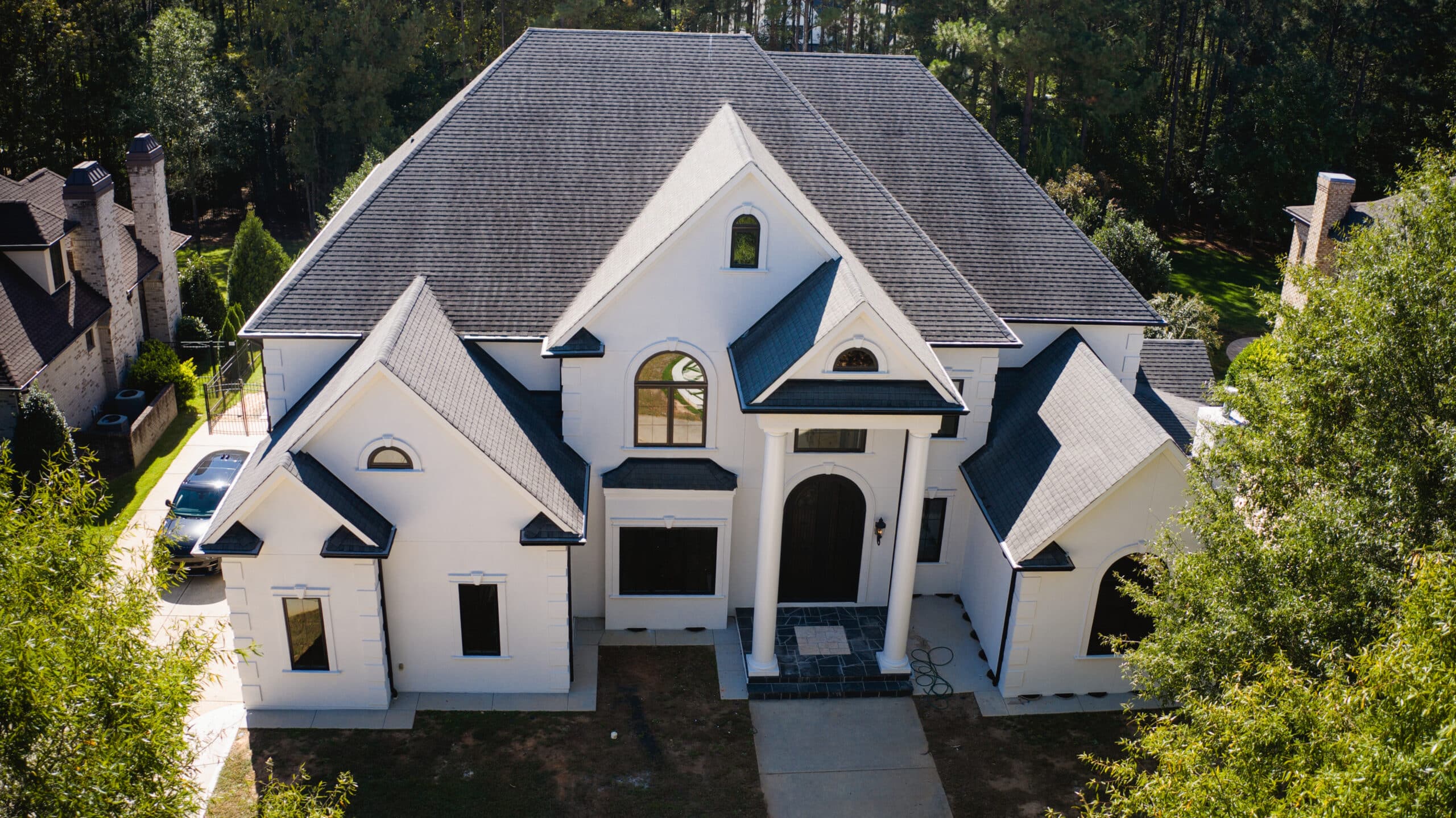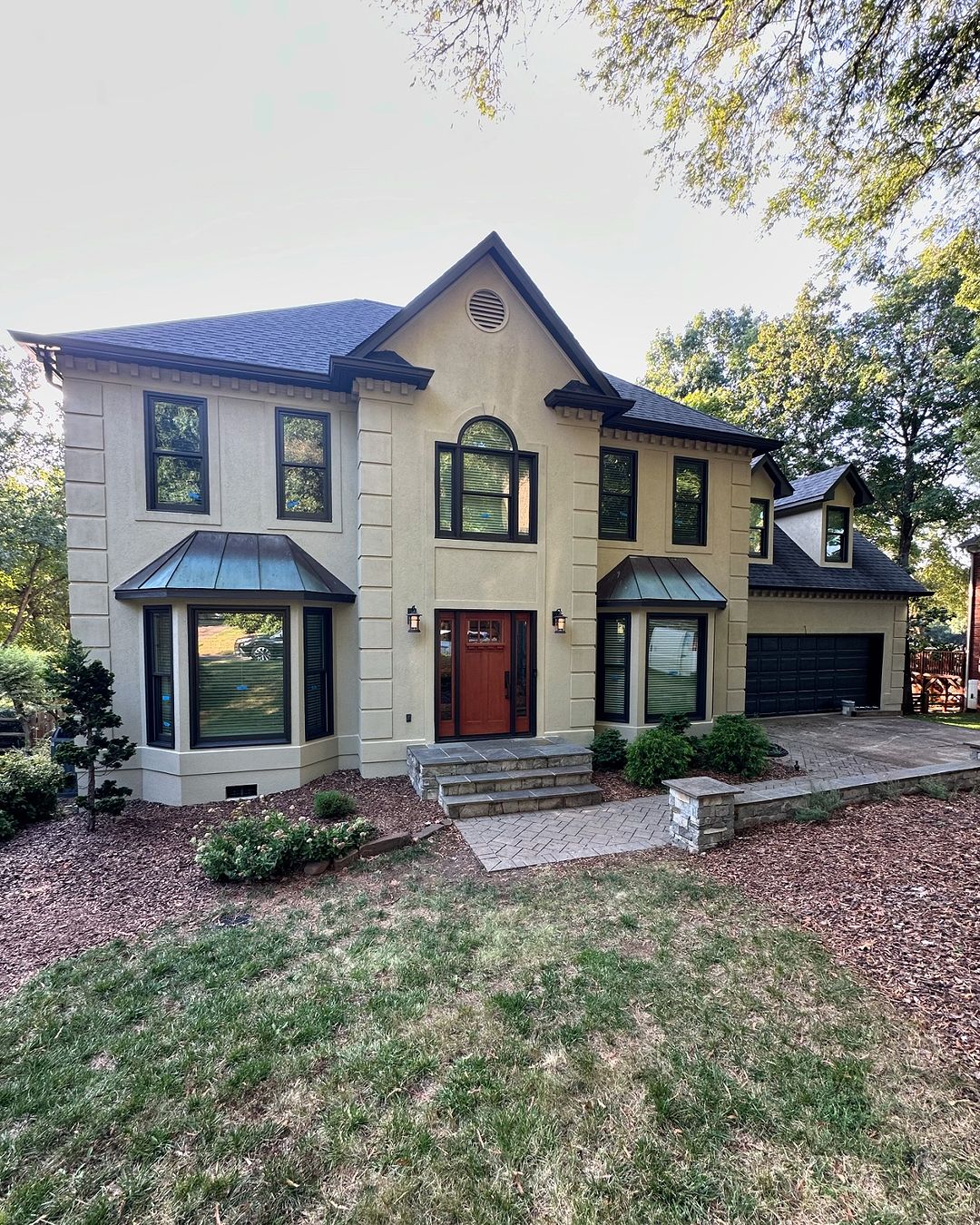If you’ve ever dealt with mildew on walls or siding, you already know how defeating it can feel. You clean, prime, paint—and six months later, it’s creeping back like it never left. Or worse, your once-smooth paint job begins to bubble and peel, leaving you with a blotchy, frustrating mess.
The problem? It might not be your cleaning. It might be your primer.
This guide cuts through the noise. We’ll explore why it matters to your paint job, which primers the pros swear by, and how to use them properly—so you can seal the surface, stop the cycle, and protect your paint for the long haul.
Understanding the Enemy

Not all fungal issues are the same—and when it comes to paint prep, that distinction matters.
Mildew is a surface-level fungus, often white or gray, that grows in moist, shaded areas. It tends to be powdery or fluffy in appearance and easy to wipe off.
Mold, on the other hand, is darker—green or black—and typically penetrates deeper into the material, often causing musty smells and requiring more aggressive treatment.
Then there are stains—discoloration left behind by either mold or mildew. Even after you’ve scrubbed and cleaned, those yellowish or brownish patches can bleed through primer and paint if not handled correctly.
Why Mildew Is a Paint Problem
-
It prevents new paint from adhering to the surface.
-
Spores can live in porous materials, even after cleaning.
-
If not sealed correctly, it can regrow underneath the paint.
So if you’ve cleaned it, don’t stop there. Think of the primer as your insurance policy—a protective barrier that keeps mildew out and helps paint stay put.
Why Regular Primer Might Not Be Enough
One of the most common DIY mistakes is using a basic primer—especially a cheap, all-purpose one—after removal. On the surface, it might seem fine. But fast-forward a few months, and issues often show up:
-
Paint starts peeling in high-humidity areas.
-
Brown stains bleed through fresh coats.
-
Or worst of all, mildew returns, despite all your efforts.
That’s because not all primers are equipped to handle previously contaminated surfaces. Some don’t contain any ingredients to resist growth. Others may trap residual moisture or spores underneath.
What You Really Need in a Primer After Mildew
-
Mildew-killing agents (like EPA-registered mildewcides or fungicides)
-
Strong adhesion to compromised or chalky surfaces
-
Stain-blocking properties to seal any discoloration
-
Moisture resistance, especially for bathrooms, basements, or shaded exteriors
Don’t skip this step or reach for the wrong product—it can mean the difference between a paint job that lasts a decade and one that fails before the year’s out.
Must-Have Features in a Post-Mildew Primer

Whether you’re painting a bathroom ceiling or prepping the shady side of your house, the right primer matters. Here’s what to look for.
Key Features to Look For:
-
EPA-registered mildewcide or fungicide
-
Stain-blocking (water stains, mildew ghosts, nicotine, tannins)
-
Moisture and humidity resistance
-
Strong bonding to porous or compromised surfaces
-
Interior or exterior use, as appropriate
-
Compatible with your topcoat (acrylic, latex, alkyd, etc.)
| Feature | Why It Matters |
|---|---|
| Mildew-resistant formula | Prevents regrowth in damp environments |
| Stain-blocking | Seals discoloration from previous mildew |
| Adhesion-enhancing | Helps new paint bond to tricky surfaces |
| VOC rating | Low-VOC is safer indoors, especially with pets or kids |
VOC Levels Matter
Primers with high VOCs can release fumes that irritate lungs or trigger asthma. If you’re working in a home with children, pets, or sensitive individuals, look for low-VOC or no-VOC primers. Brands like ECOS and AFM Safecoat specialize in these.
Customer Worries We Hear All the Time:
-
“Will this primer actually stop mildew from coming back?”
-
“Can I use it inside with my kids and pets?”
-
“Is it safe after I cleaned with bleach or vinegar?”
We’ll answer these below, but spoiler: Yes—with the right product and prep, absolutely.
Pro-Recommended Primers Removal
Let’s break down the best primers for your exterior surfaces. These are tried-and-true options favored by professional painters for their reliability, mold-fighting ability, and durability.
| Primer | Type | Best For | Pros | Cons |
|---|---|---|---|---|
| Zinsser Mold Killing Primer | Water-based | Interior & exterior use, especially basements and bathrooms | – EPA-registered fungicide – Binds to existing mildew residue (post-cleaning) – No sanding required |
– Strong odor – Not ideal for VOC-sensitive areas |
| KILZ Premium High-Hide Stain Blocking Primer | Water-based | Interior surfaces like kitchens and laundry rooms | – Great adhesion – Blocks previous mildew stains – Mold- and mildew-resistant film |
– Does not kill mildew—must clean thoroughly first |
| INSL-X Mold & Mildew-Proof Primer | Acrylic waterborne | Garages, soffits, shaded exterior siding | – Built for humid climates – Excellent for exterior use |
– May require two coats for deep stains |
| Benjamin Moore Fresh Start® High-Hiding Primer | Waterborne alkyd | Light mildew-stained drywall and ceilings | – Mildew-resistant – Excellent hide and coverage |
– Doesn’t neutralize mildew—clean first |
| Sherwin-Williams Loxon Concrete & Masonry Primer | Water-based | Stucco, concrete, brick | – Seals alkaline surfaces – Mildew-resistant film |
– Limited to masonry surfaces only |
How to Properly Apply Primer After Removal
Prepping a surface post-mildew isn’t just about cleaning—it’s about creating a foundation your primer can cling to and protect. Here’s how to do it right.
Step-by-Step Surface Prep
-
Remove all visible stains
Use a mold/mildew remover—store-bought or a mix of bleach (1 part) to water (3 parts). Never just paint over it. -
Rinse thoroughly
Let the surface dry completely. Even dampness can ruin adhesion. -
Sand flaky or chalky areas
This removes loose paint and opens pores for better primer grip. -
Use a mildew-killing primer
Apply only on a clean, dry surface. Dirt or moisture = trouble later.
Application Tips
-
Use a brush or roller for smaller indoor areas
-
Use an airless sprayer for large exteriors or textured walls
-
Stir the primer well—don’t shake it
-
Always check the label for ideal temperature/humidity ranges (most prefer 50–90°F)
💡 One coat is usually enough. Two coats may be necessary for water-stained ceilings or previously infested walls.
Dry Time & Recoat
-
Touch-dry: 30 minutes to 1 hour
-
Recoat-ready: 1–4 hours (always check your primer label)
-
If unsure, do a test patch—look for bubbling, bleeding, or poor coverage.
Mistakes That Lead to Comeback

Even the best primer can’t save a paint job if the prep wasn’t solid. Here are the most common pitfalls to avoid:
Mistake #1: Priming Before Mildew Is Fully Gone
-
You might seal in spores that later feed off trapped moisture.
Mistake #2: Skipping Primer
-
Mildew-resistant paint isn’t enough by itself—primer creates a stronger barrier.
Mistake #3: Using the Wrong Primer
-
Masonry primers on wood, or interior primers outdoors, just won’t last.
Mistake #4: Ignoring Ventilation
-
Even the best anti-mold primer can’t win if the room stays damp. Use fans, dehumidifiers, or vents to reduce humidity.
When to Call a Pro for Post-Mildew Priming
Not every problem is a DIY project. Here’s how to tell when it’s time to bring in the experts.
Signs You Need a Professional
-
It keeps returning despite your best efforts
-
Walls feel soft, spongy, or smell musty
-
You’re dealing with stucco, textured brick, or cedar shingles
-
The previous paint job is failing (peeling, bubbling, cracking)
-
You’re unsure which products are safe for your surface
What a Pro Brings to the Table
-
Commercial-grade primers
-
Advanced prep (power washing, wood repair, caulking)
-
Knowledge of substrate compatibility (wood, drywall, concrete)
-
Warranty on both product and labor
-
Faster turnaround with better tools and crew size
Frequently Asked Questions
Can I use a mold-killing primer on top of bleach-cleaned surfaces?
Yes, but only after rinsing thoroughly and letting it dry. Bleach residue can interfere with adhesion.
Do I still need a mold-resistant topcoat?
Highly recommended, especially in bathrooms, laundry rooms, and shaded exterior walls.
Can I skip primer if I’m using a high-end exterior paint?
Only if the surface is mildew-free, dry, and the paint is a 2-in-1 paint + primer with mold resistance. Still, a separate primer often gives better results.
Lock In the Clean with the Right Primer
Cleaning mildew is just the beginning. Without the right primer, your surface remains vulnerable—and all that hard work could be undone.
Don’t risk your investment with a shortcut. Look for primers that are:
-
Specifically designed to resist mildew or kill spores
-
Compatible with your paint and surface type
-
Safe for your home’s indoor air quality if working inside
A high-quality primer isn’t just a product—it’s a strategy. It locks in the clean, seals out the spores, and lays the foundation for a long-lasting, beautiful finish.




